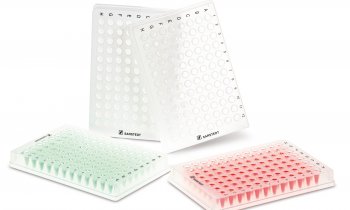Image source: Dr. Bruce Chassey Laboratory. National Institute Of Dental Research. Li-shan. Photographer: Mike Mitchell
News • Inherited neuromuscular disease HSP
Genetic cause for hereditary spastic paraplegia identified
Scientists at St George’s, University of London, in collaboration with researchers from Germany, the USA, Tunisia and Iran have identified a new gene associated with the neuromuscular disorder, hereditary spastic paraplegia (HSP).
The study, published in Nature Communications, also highlights a potential mechanism for the disease, which is already being targeted in drug trials for Alzheimer’s and Huntington’s diseases.
HSP is an inherited condition that causes stiffness and weakness in the leg muscles, often leading to patients becoming wheelchair-bound. Gradually getting worse over time, and with no treatments currently available, patients can only be offered muscle relaxants, which help the muscles to cope with the inability to move smoothly. Some patients also go on to have problems with their eyes, and can have brain development issues too. Several genes have already been linked with the disorder, which causes degeneration of the nerves that lead down from the brain. But these genes only account for around two-thirds of patients with the condition. The new mutation, found in the gene RNF170 by the researchers, gives doctors the opportunity to test for the disease in the other third of patients with no clear genetic diagnosis.
If you have a child who starts walking fine, but slowly loses the ability to walk, perhaps eventually needing a wheelchair, that can be very difficult for the family and child to deal with
Yalda Jamshidi
The Genetics Research Centre at St George’s, is leading a programme to identify the genetic mutations causing diseases in undiagnosed patients. Families with varying issues, including muscle conditions, neurodevelopmental disorders and heart problems have all come through the Centre in the hope of receiving a diagnosis.
As with this study, the families coming to the Centre all have their genetic code sequenced and the researchers look for mutations in known genes that may have been missed during routine screening, and also mutations in genes not yet associated with disease. In this case, the scientists were able to identify and confirm the gene’s involvement in HSP with the help of GeneMatcher – a matchmaking site for genes and investigators. This tool helped to identify further families with RNF170 mutations from Germany, Tunisia and Iran.
Once confirmed, the team then took the research a step further to try and understand the mechanism by which the gene causes HSP. As highlighted by Dr Daniel Osborn, a St George’s co-author, “despite their obvious differences, human and zebrafish neuromuscular development is very similar, making zebrafish a fantastic model to understand the mechanisms of HSP.”

“We switched off the gene in a zebrafish model of the disease,” says Dr Yalda Jamshidi, lead for the Genetics Research Centre at St George’s and one of the lead researchers on the study. “We found that this caused the fish to develop smaller eyes and heads, and have problems with movement. This fits with what we see in the patients.” Additional experiments in cells identified defects in the calcium signalling pathway essential for cell function. This pathway is already known to play a role in other diseases, such as Alzheimer’s and Huntington’s. The researchers hope that drugs being developed to tackle these diseases could also be used to improve treatments for HSP.
“Our ambition is to have a drug that will work for patients, as we don’t have any alternative treatments other than managing the condition,” adds Dr Jamshidi. “If you have a child who starts walking fine, but slowly loses the ability to walk, perhaps eventually needing a wheelchair, that can be very difficult for the family and child to deal with. We want to be able to test for the disease, and as soon as you know there’s a mutation, you can put them on a new drug and hopefully counteract the progressive decline.”
Source: St George's, University of London
21.10.2019











